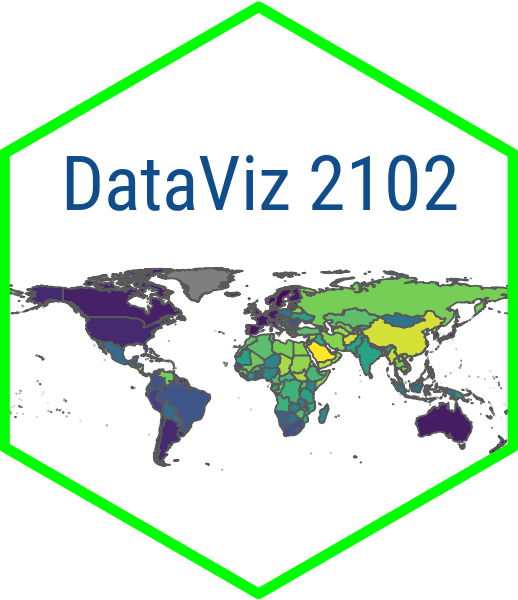# Load countrycode
library(countrycode)
# Create new iso3c variable
democracy <- democracy |>
mutate(iso3c = countrycode(sourcevar = vdem_ctry_id, # what we are converting
origin = "vdem", # we are converting from vdem
destination = "wb")) |> # and converting to the WB iso3c code
relocate(iso3c, .after = vdem_ctry_id) # move iso3c
# View the data
glimpse(democracy)Merging and Summarizing Data
October 27, 2023
Merging Data Frames
- Often we have data from two different sources
- Results in two data frames
- How to make them one so we can analyze?
- Key questions
- What is the unit of analysis?
- What is/are the corresponding identifier variables?
- Are the identifier variables in common?
- Or do they have to be added/transformed to match?
Merging WB and V-Dem Data
- These are both time-series, country-level data
- Need to merge by country-year
- Year is easy
- But there are many different country codes
- Can use
countrycodepackage to assign country codes
countrycode example
Try it Yourself
- Using your democracy data frame from the last lesson
- Use
mutate()andcountrycode()to add iso3c country codes - Use
relocateto move your iso3c code to the “front” of your data frame (optional)
05:00
Types of joins in dplyr
- Mutating versus filtering joins
- Four types of mutating joins
inner_join()full_join()left_join()right_join()
- For the most part we will use
left_join()
left_join() example
# Load readr
library(readr)
# Perform left join using common iso3c variable and year
dem_women <- left_join(democracy, women_emp, by = c("iso3c", "year")) |>
rename(country = country.x) |> # rename country.x
select(!country.y) # crop country.y
# Save as .csv for future use
write_csv(dem_women, "data/dem_women.csv")
# View the data
glimpse(dem_women) Try it Yourself
- Take your V-Dem data frame and your World Bank data frame
- Using
left_join()to merge on country code and year - Along the way, use
rename()andselect()to insure you have just one country name
05:00
Group, Summarize and Arrange
group_by(),summarize(),arrange()- A very common sequence in data science:
- Take an average or some other statistic for a group
- Rank from high to low values of summary value
Example
# group_by(), summarize() and arrange()
dem_summary <- dem_women |> # save result as new object
group_by(region) |> # group dem_women data by region
summarize( # summarize following vars (by region)
polyarchy = mean(polyarchy, na.rm = TRUE), # calculate mean, remove NAs
gdp_pc = mean(gdp_pc, na.rm = TRUE),
flfp = mean(flfp, na.rm = TRUE),
women_rep = mean(women_rep, na.rm = TRUE)
) |>
arrange(desc(polyarchy)) # arrange in descending order by polyarchy score
# Save as .csv for future use
write_csv(dem_summary, "data/dem_summary.csv")
# View the data
glimpse(dem_summary)Try it Yourself
- Try running a
group_by(),summarize()andarrange()in your Quarto document - Try changing the parameters to answer these questions:
- Try summarizing the data with a different function for one or more of the variables.
- What is the median value of
polyarchyfor The West? - What is the max value of
gdp_pcfor Eastern Europe? - What is the standard deviation of
flfpfor Africa? - What is the interquartile range of
women_repfor the Middle East?
- Now try grouping by country instead of region.
- What is the median value of
polyarchyfor Sweden? - What is the max value of
gdp_pcNew Zealand? - What is the standard deviation of
flfpfor Spain? - What is the interquartile range of
women_repfor Germany?
Sort countries in descending order based on the mean value of
gdp_pc(instead of the median value ofpolyarchy). Which country ranks first based on this sorting?Now try sorting countries in ascending order based on the median value of
women_rep(hint: delete “desc” from thearrange()call). Which country ranks at the “top” of the list?
Coding Assignment 1
Coding assignment 1 builds off this lesson
Take the remainder of the class time to work on it. I will be here in case you have questions.
You may work individually or in groups.
